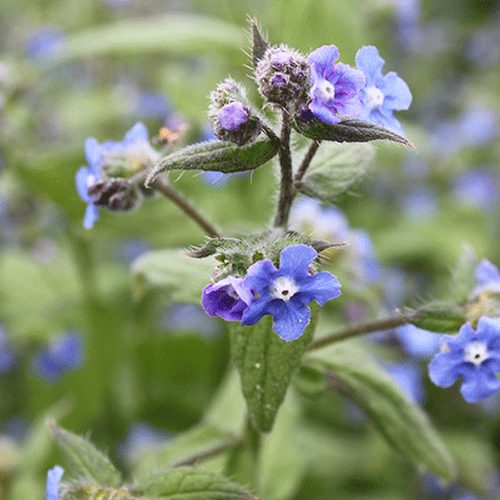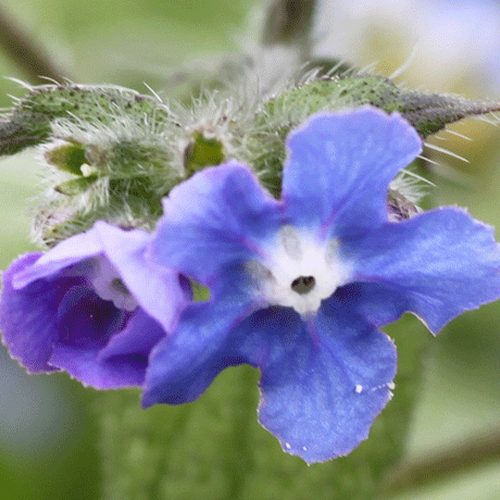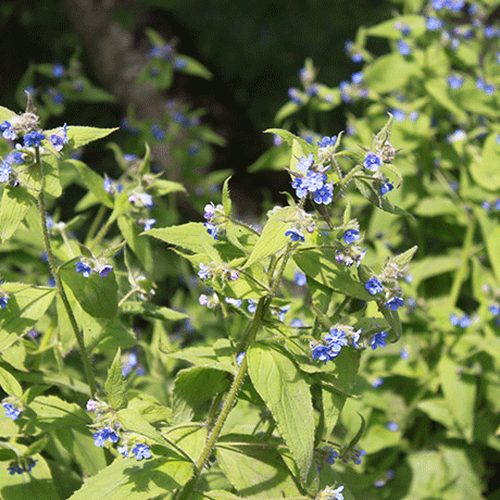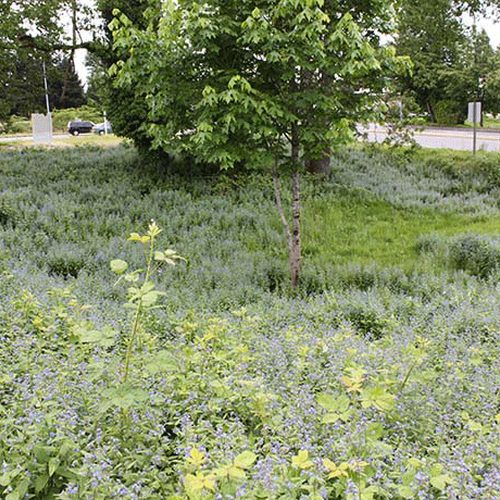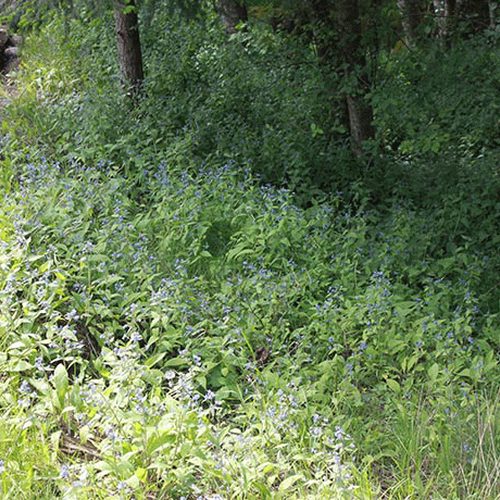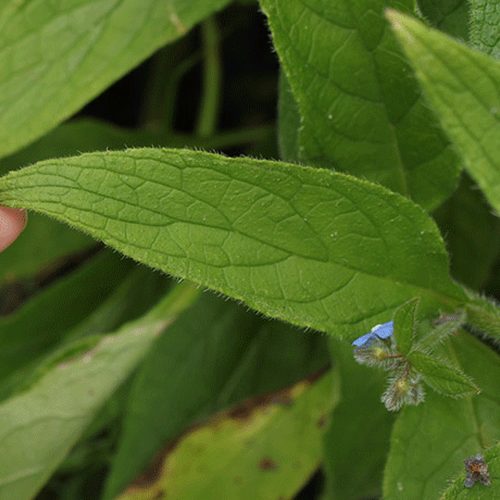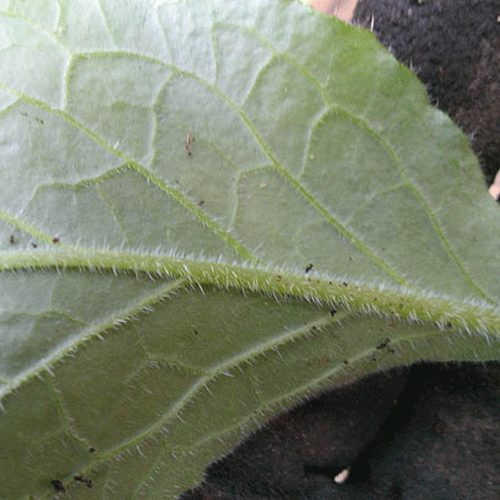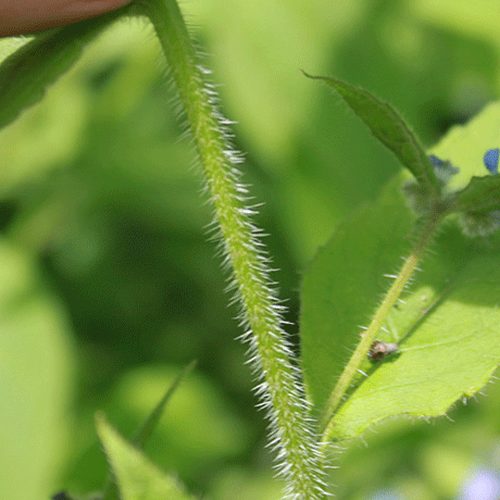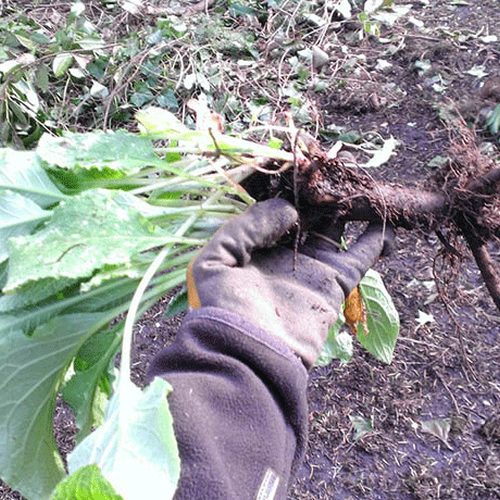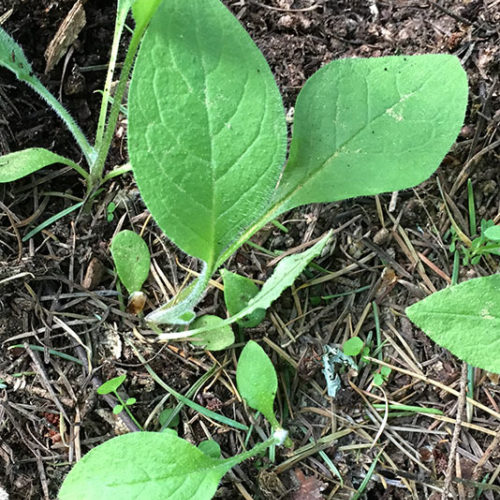Green Alkanet
Pentaglottis sempervirens
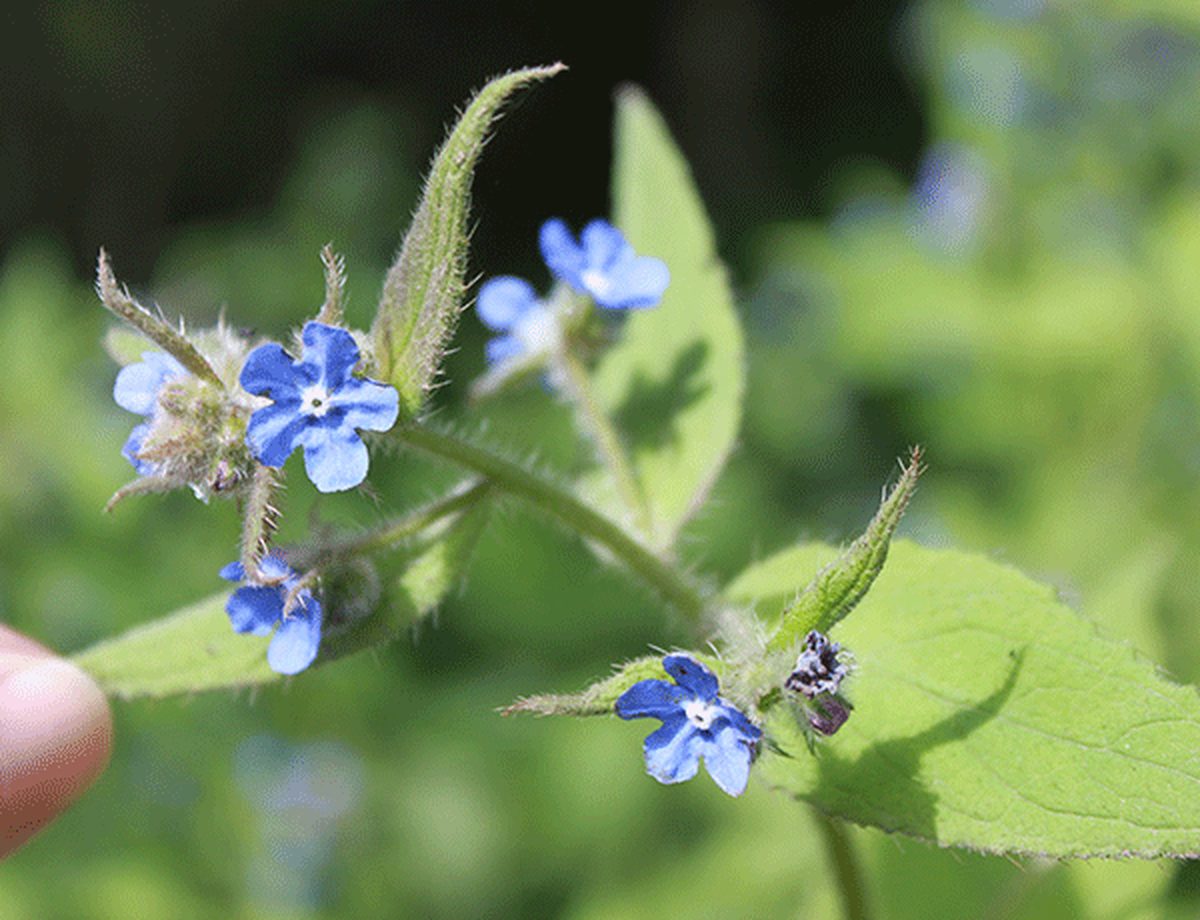
Family: Boraginaceae
Other Common Names: evergreen bugloss, evergreen alkanet
Weed class: C
Year Listed: 2022
Native to: Southwestern Europe
Is this Weed Toxic?:
not known to be
Legal listings:
This plant is also on the Washington State quarantine list. It is prohibited to transport, buy, sell, offer for sale, or distribute plants or plant parts of quarantined species into or within the state of Washington or to sell, offer for sale, or distribute seed packets of seed, flower seed blends, or wildflower mixes of quarantined species into or within the state of Washington. Please see WAC 16-752 for more information on the quarantine list. For questions about the quarantine list, contact the Washington State Department of Agriculture's Plant Services Program at (360) 902-1874 or email PlantServices@agr.wa.gov.
Why Is It a Noxious Weed?
How would I identify it?
General Description
Hebaceous perennial that grows up to 3.3 feet (1 meter) tall and has deep, thick roots. Plant parts covered in stiff hairs (hispid).
Flower Description
Flowers grow in terminal and axillary clusters (cymes) on long peduncles (flower stems). Clusters are subtended by a pair of leaf-like bracts. Flowers have 5 petals, are radially symmetrical, are blue with white center, and the petals are fused at the base into a tube. Flower stamens are equal and included down in the tube with the style. Flowers 0.4 inches (8-10 mm) in diameter.
Leaf description
Basal leaves are on long petioles and grow up to 15.75 inches (40 cm) long. Leaves are ovate (egg-shaped), abruptly contracted at the base and have a pointed tip. Leaves are alternately arranged on the stems and become smaller and more sessile going upward.
Fruit Seed Description
There are 4 nutlets produced per flower, ridged with knob-like, stalked bases.
May Be Confused With
Green alkanet can look similar to annual bugloss (Anchusa arvensis), common bugloss (Anchusa officinalis) and blueweed (Echium vulgare), other plants in the Boraginaceae family.
Where does it grow?
Plants grow in partly shaded to shaded sites in garden settings, woodlands and disturbed sites such as roadsides. Noted as growing in lowland western Washington and British Columbia south to California. Click here to see a county-level distribution of green alkanet in Washington.
How Does it Reproduce?
Plants reproduce by seed.
How Do I Control It?
Though there is no requirement to control this plant, we do recommend removing green alkanet due to its weedy spread.
Plants can be dug up, making sure to remove all or as much of the taproot as possible, as fragments left in the soil can resprout. It is easiest to dig up roots when soil is moist. After removal, make sure to monitor the area for seedlings. If time is limited, prevent seed production by cutting back and removing flowering stems. Monitor the plants for any resprouting flower stems as well.
Large populations could also be treated with a selective broadleaf herbicide. Make sure to read and follow the label on any product you use and contact your county noxious weed coordinator for specific recommendations.
For More Information
Our written findings on green alkanet.
Invasive.org webpage on Pentaglottis sempervirens
Electronic Flora of British Columbia information on Pentaglottis sempervirens.



